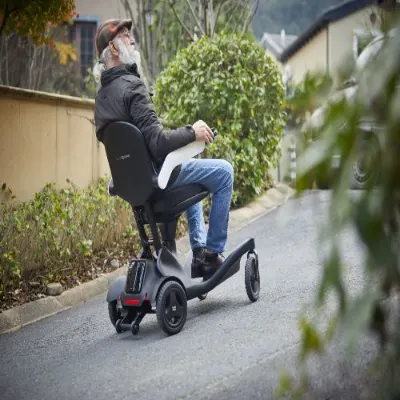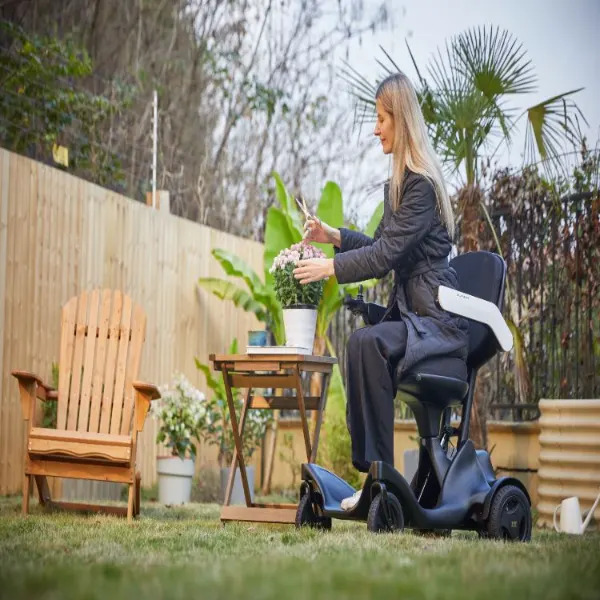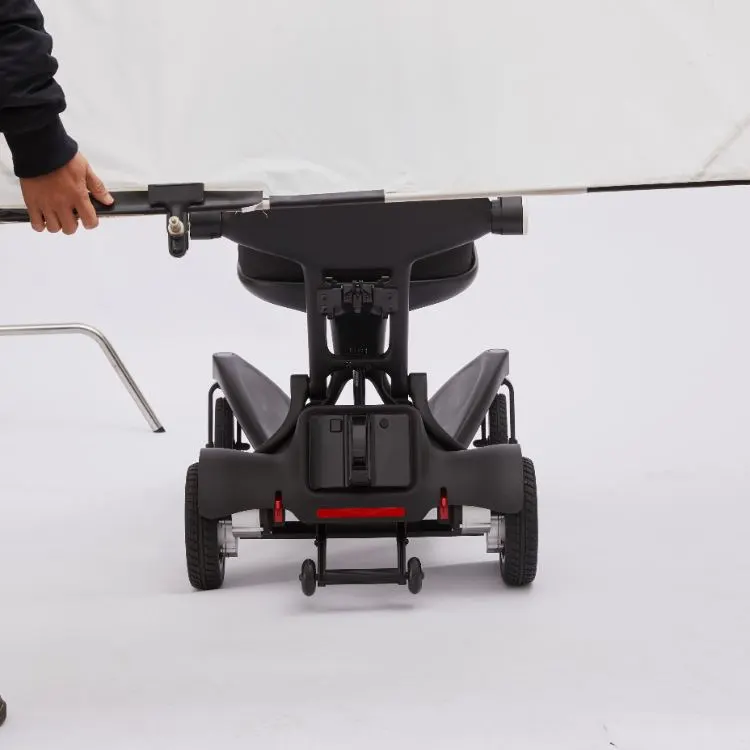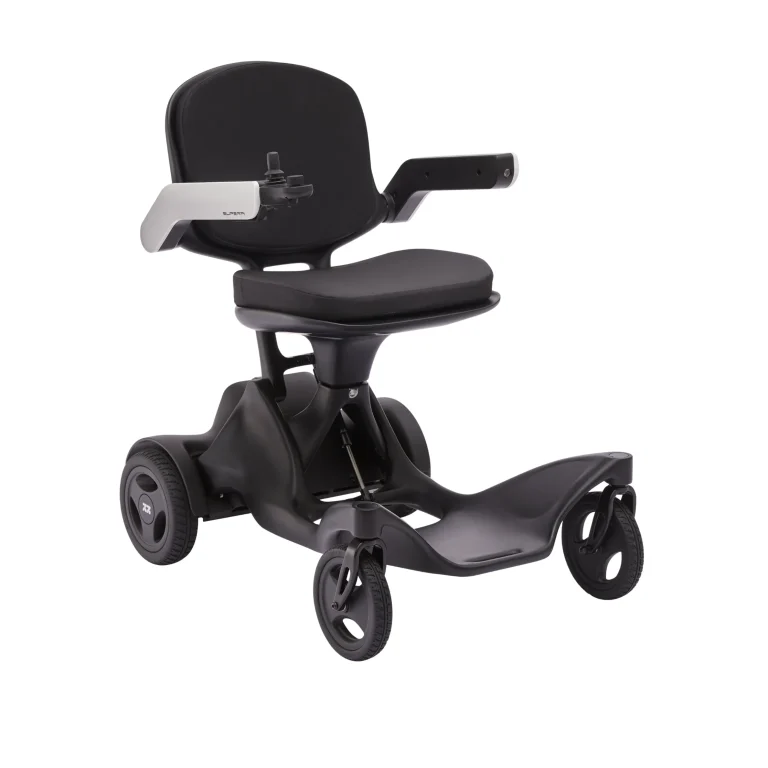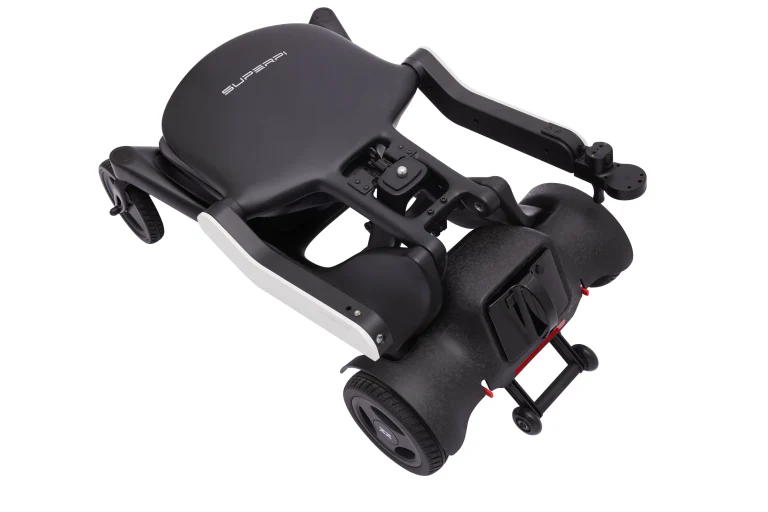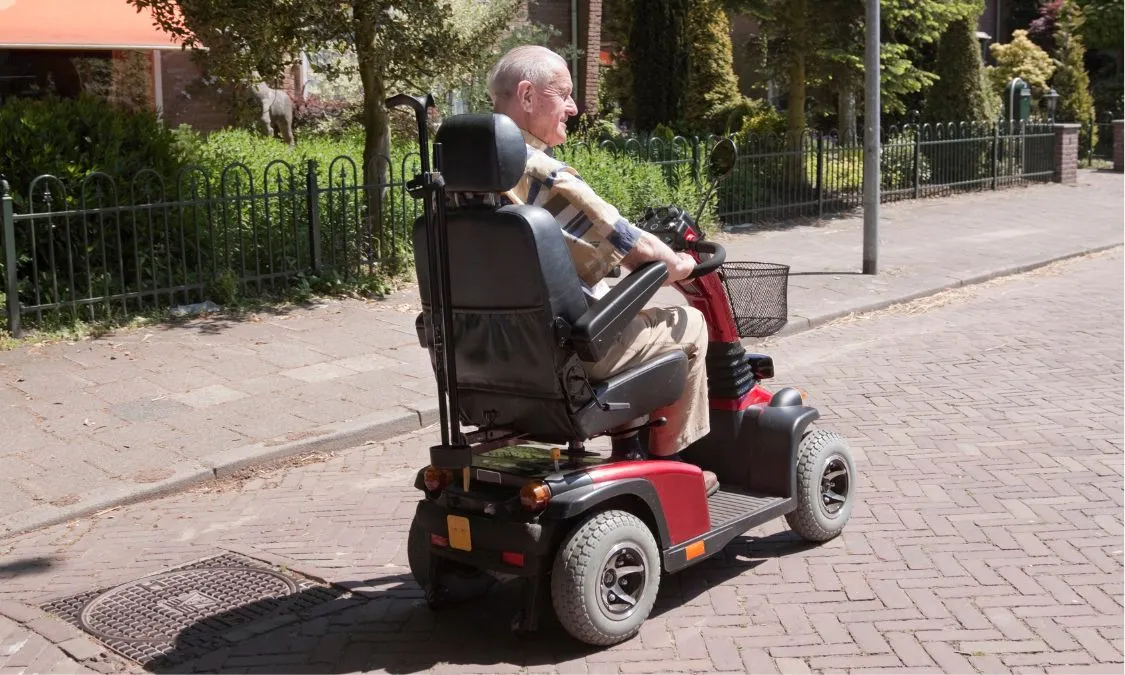
- Battery Pack: The power source, usually consisting of lead-acid or lithium-ion batteries, drives the motor and determines the scooter’s range. Proper charging and storage are critical to its longevity.
- Motor: Converts electrical energy into mechanical power to propel the scooter. Overloading or rough terrain can strain the motor, leading to wear.
- Tires: Provide traction and stability. Pneumatic (air-filled) tires offer a smoother ride but require regular pressure checks, while solid tires are maintenance-free but less comfortable.
- Bremser: Ensure safe stopping. Regular inspection prevents failures that could lead to accidents.
- Frame and Seat: The structural foundation and seating area must be checked for wear to maintain comfort and safety.
1.2 Reading the User ManualEvery mobility scooter comes with a user manual that outlines specific maintenance requirements, recommended tools, and safety guidelines. Reviewing this document before use helps users understand the manufacturer’s recommendations for charging cycles, tire pressure, and servicing intervals. Keeping the manual accessible ensures quick reference during routine checks or troubleshooting.1.3 Assessing SuitabilityNot all scooters are suited to every user or environment. Seniors should assess their physical capabilities and intended use—such as indoor navigation, outdoor travel, or a combination—before establishing a maintenance routine. For example, a lightweight, three-wheel scooter may be ideal for indoor use but less stable on rough outdoor terrain, requiring different care than a heavy-duty, four-wheel model.Section 2: Battery Maintenance and CareThe battery is the heart of a mobility scooter, and its proper care is the single most important factor in extending the device’s lifespan. Batteries typically last between 18 months and four years, depending on type, usage, and maintenance. This section outlines best practices for charging, storage, and replacement to maximize battery life.2.1 Choosing the Right Battery TypeMobility scooters commonly use sealed lead-acid (SLA) or lithium-ion batteries. Each type has distinct characteristics:
- Sealed Lead-Acid (SLA) Batteries: Affordable and widely used, these batteries last 18 months to two years with daily use or up to three years with infrequent use and proper care. They require careful charging to avoid sulfation, a buildup that reduces capacity.
- Lithium-Ion Batteries: Lighter and more efficient, these batteries last five to eight years with proper care. They charge faster and handle deeper discharges but come at a higher initial cost.
Users should consult the manual to confirm the battery type and select a compatible charger to avoid damage.2.2 Charging Best PracticesProper charging habits prevent premature battery failure:
- Use the Recommended Charger: Always use the charger provided by the manufacturer or a compatible replacement to ensure the correct voltage and current.
- Charge After Each Use: Even short trips should be followed by a “top-up” charge to maintain battery health. For daily users, charge overnight to ensure a full cycle.
- Avoid Overcharging: Limit charging to 8-10 hours for SLA batteries to prevent overcharging, which reduces lifespan. Lithium-ion batteries have built-in regulators, but disconnecting after a full charge is still recommended.
- Prevent Deep Discharges: Do not let the battery drop below 25% capacity, as this strains the cells and shortens lifespan. Monitor the battery gauge and recharge as needed.
- Break in New Batteries: New batteries should be fully charged and discharged 15-20 times to reach optimal capacity. Follow the manufacturer’s break-in instructions.
2.3 Storage GuidelinesWhen not in use for extended periods, proper storage preserves battery life:
- Full Charge Before Storage: Charge the battery to 100% and store the scooter in a cool, dry place away from extreme temperatures (below 32°F or above 95°F).
- Periodic Charging: For SLA batteries, recharge every two weeks during storage. Lithium-ion batteries should be kept at 40% charge to minimize stress.
- Remove from Scooter: For long-term storage (over a month), disconnect and store the battery separately to prevent gradual discharge.
2.4 Testing and Replacing BatteriesRegular testing ensures the battery performs reliably:
- Monthly Voltage Check: Use a multimeter set to DC voltage (20V range) to measure each battery’s output. A healthy 12V battery should read 12.6V when fully charged. A reading below 12.0V indicates a need for replacement.
- Professional Load Test: An annual test by a technician can predict failure and identify weak cells.
- Replacement: When performance declines (e.g., reduced range or inability to hold a charge), replace the battery. Match the new battery to the original specifications and dispose of old batteries at a recycling center.
Section 3: Tire Inspection and MaintenanceTires are critical for stability and safety, and their condition directly impacts battery life and ride quality. This section covers inspection, pressure management, and replacement procedures.3.1 Visual InspectionBefore each use, check the tires for:
- Wear and Tear: Look for bald spots, cracks, or exposed cords. Replace tires showing significant wear to prevent blowouts.
- Debris: Remove stones, nails, or glass embedded in the tread to avoid punctures.
- Alignment: Ensure tires are evenly worn and the scooter tracks straight to avoid uneven strain.
3.2 Pressure ManagementPneumatic tires require regular pressure checks:
- Recommended Pressure: Refer to the manual for the ideal PSI (typically 20-40 PSI). Use a tire pressure gauge to verify.
- Inflation: Use a hand pump or air compressor to adjust pressure. Overinflation reduces traction, while underinflation increases rolling resistance, draining the battery faster.
- Frequency: Check pressure weekly or before long trips.
Solid tires do not require inflation but should be inspected for cracks or deformation.3.3 Replacement ProcessWorn tires should be replaced promptly:
- Tools Needed: A wrench, tire lever, and new tire compatible with the scooter model.
- Steps: Loosen the wheel bolts, remove the wheel, replace the tire, and tighten bolts to the manufacturer’s torque specifications. Ensure proper alignment during reassembly.
- Professional Help: For complex models, consult a technician to avoid damaging the wheel assembly.
Section 4: Cleaning and General UpkeepRegular cleaning prevents dirt buildup and identifies wear, extending the scooter’s lifespan. This section details the process and safety considerations.4.1 Cleaning Routine
- Frequency: Clean after every use or weekly for regular users. Perform a deep clean monthly.
- Materials: Use a damp cloth, mild detergent (e.g., dish soap), and a soft brush. Avoid harsh chemicals that can damage plastic or metal.
- Process: Wipe down the seat, armrests, tiller, and frame. Use the brush to clean wheels and crevices. Rinse with a damp cloth and dry thoroughly to prevent rust.
- Battery Compartment: Keep this area dry to avoid electrical issues.
4.2 Waxing the FrameApplying wax (e.g., car or bike wax) to the frame every month protects the paint and reduces dirt adhesion. Use a soft cloth to apply and buff to a shine.4.3 Inspecting ComponentsDuring cleaning, check for:
- Loose Bolts and Screws: Tighten with a wrench, but avoid overtightening, which can strip threads.
- Brake Functionality: Test brakes for responsiveness and adjust or service if sluggish.
- Electrical Components: Ensure lights, horn, and controls work properly.
Section 5: Safe Operation and Driving HabitsHow a scooter is operated affects its mechanical components and battery. This section outlines best practices to minimize wear.5.1 Smooth Driving Techniques
- Gradual Acceleration and Braking: Avoid sudden starts and stops to reduce strain on the motor and battery. This can improve efficiency by up to 15%.
- Moderate Speed: Use lower speeds (1-4 mph) indoors and higher speeds (up to 8 mph) only on open, safe terrain. Excessive speed wears components faster.
- Anticipate Obstacles: Slow down gradually for turns, curbs, or pedestrians to maintain control.
5.2 Terrain Considerations
- Preferred Surfaces: Use paved paths to minimize stress on tires and the motor. Avoid steep inclines (over 10-12 degrees) unless the scooter is designed for them.
- All-Terrain Models: For rough terrain, choose scooters with larger tires and suspension, but still limit exposure to extreme conditions.
5.3 Weight ManagementExceeding the weight capacity (typically 250-500 lbs) strains the motor, battery, and frame. Distribute loads evenly in storage baskets to maintain balance.Section 6: Storage and Environmental ProtectionProper storage prevents damage from weather and inactivity. This section provides detailed guidelines.6.1 Short-Term Storage
- Location: Store indoors or under a cover to protect from rain, sun, and temperature extremes.
- Charging: Keep the battery at 50-100% charge, recharging weekly for SLA batteries.
6.2 Long-Term Storage
- Forberedelse: Fully charge the battery, disconnect it, and store separately in a cool, dry place. Lift the scooter to relieve tire pressure.
- Duration: Check and recharge every two weeks for SLA batteries, or maintain 40% charge for lithium-ion.
- Recommissioning: Before reuse, inspect tires, charge the battery, and test all functions.
6.3 Weather ProtectionUse a scooter cover or garage storage to shield from rain, snow, and UV damage. Avoid puddles and wet conditions that can corrode electrical components.Section 7: Professional Servicing and RepairsAnnual servicing by a professional ensures comprehensive care beyond routine maintenance.7.1 Scheduling Service
- Frequency: Once or twice yearly, depending on use. Follow the manufacturer’s schedule.
- Provider: Choose an authorized dealer or technician familiar with the scooter model for quality repairs and genuine parts.

